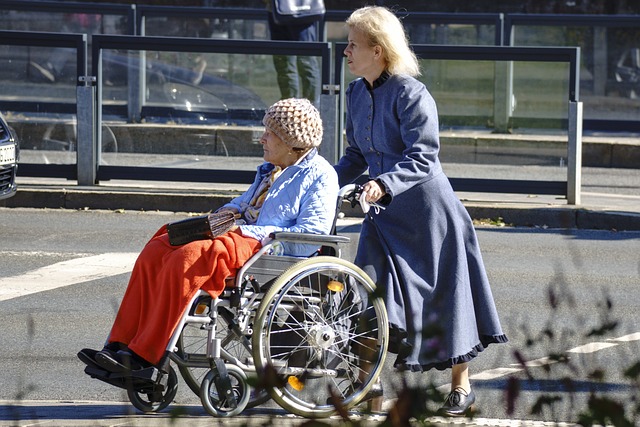America is about to have a disaster when it comes to caring for its older citizens. While the problem may not hit tomorrow, it’s well on its way, as over one-third of Americans will soon be over the age of 65.
Although this may not sound like a bad thing, it is bad when you consider that the caregiving industry is already busting at the seams. In fact, Harvard estimated that eventually, over 11 million employees will be stuck between a rock and a hard place as they have to leave their jobs to care for both children and their elderly parents.
To learn more about this pending crisis and what you can do to prepare, keep reading.
What is the Caregiving Crisis?
As individuals age, they become much more susceptible to chronic health conditions which require continuous care. Some examples include Alzheimer’s, Dementia, and Parkinson’s Disease. Once diagnosed with these conditions, it is often impossible for an individual to live alone. As a result, if the family can’t afford an assisted-care home, many of them move in with family members.
While this may not sound bad initially, it’s important to remember that many of these individuals require around-the-clock care. This means that the family members they live with must often discontinue working or drastically reduce their hours in order to care for them.
To make matters worse, while there are options for hiring home care assistants, there’s a shortage there, too, as wages fail to keep up with a quickly growing industry. Meaning it is much more likely for a son or daughter to quit working to care for their ailing family member. Because of this mounting issue, economists estimate that a massive number of up to 1/5th of Americans will leave their positions within the next decade to care for an aging family member, resulting in a loss of over $290 million annually from the US GDP by 2030.
And it isn’t just the aging population that is contributing to this, as there is also a lack of childcare centers and the number of home daycares are in decline—meaning that working individuals could find themselves leaving the workforce to care for both children and their parents at the same time.
Just because it hasn’t happened to you yet doesn’t mean it won’t, as this is just the beginning of a crisis, and so far, not much is being done to resolve it.
Related: 7 Books to Help You Through Your Caregiving Journey

Possible Solutions for the Caregiving Crisis
Sadly, there isn’t any easy fix for the coming crisis. Individuals are living longer than ever before (which is a good thing), and birth rates are down. As nice as it would be to add people to the workforce with a snap of the fingers, it’s just not possible. Below are some proposed solutions to the caregiving crisis. Although one or two would likely help, the reality is that several would need to be implemented to stave off the coming issue.
1. Make Caregiving Jobs More Attractive
Much of the lack of a caregiving workforce came about during COVID when these jobs got too demanding, and caregivers everywhere burned out. Plus, these jobs often have long hours for little pay and aren’t enticing new individuals to get the vast education they need to work them.
One solution would be to create pipeline programs for students to learn the skills needed to become caregivers quickly. Additionally, pay rates would need to be raised to further entice new applicants. While these jobs will still be emotionally and physically taxing, making them more attractive could go a long way.
2. Expand Public Assistance Programs
Currently, public assistance programs cover home care for the most dire cases—particularly for the elderly who don’t have family members nearby. Expanding these programs to offer more care to families could help keep employees in the workforce.
Plus, government jobs have always been considered premium, and opening a branch of home health care nurses run by the government could make the position more attractive than the current private sector jobs, which are low pay and often unstable.
Related: 7 Tips for Choosing an Assisted Living Facility
3. Expanding Digital Care
Although home care nurses can never fully be replaced by technology, using technology to provide some of the needed around-the-clock care could go a long way in helping those with family members who need constant monitoring.
For example, an individual with Alzheimer’s who is prone to wandering could be digitally monitored during working hours with on-call help ready to arrive if any of the alarms are tripped and they are trying to leave the home.

4. Offering More Leeway for Workers Who Remain
One of the biggest issues is that not all those who need care need a full-time caregiver. For example, a blind older individual may just need his or her adult kid to drive them to appointments and cook them meals. This individual’s adult kid could stay in the workforce as long as they were given access to the time off they needed to take their parent to appointments and had the opportunity to work from home whenever possible.
It’s time to admit that the work-life balance in the US is extremely off-kilter, and enforcing policies which would allow workers to scale back hours or adjust hours to fit caregiving could stave off the crisis for several years.
5. The Government Offering Smaller Services People Need
On this same note, creating government programs to fill these gaps could go a long way. Why don’t we have a program for taking seniors to doctor’s appointments? Of course, Lyft or Uber is available, but these costs can add up, and often, a caregiver still has to help the senior to call these services.
Additionally, while Meals On Wheels is an excellent program for feeding seniors, it is often not available to the middle-class, which is also buckling under the cost of caregiving. Adding a program that delivered meals to seniors, even if they lived with family members could take the pressure off of the caregiver, who could then work all day without worrying about their parent missing lunch.
Overall, there are so many things that can be done for the caregiving crisis, but the government isn’t taking the time to do any of them. We just worry that by the time they realize how critical the caregiving situation is, it will be too late.
Have you or a loved one had to stop working to care for a family member? Share your story below. Also, feel free to offer suggestions for the American Caregiving crisis that you think would help.
You May Also Enjoy: Resources for Caring for Aging Parents


















